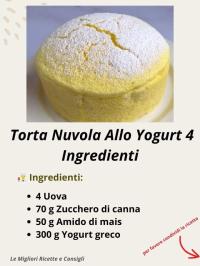Copy Link
Add to Bookmark
Report
Mead Lovers Digest #0296

Subject: Mead Lover's Digest #296, 26 April 1994
From: mead-lovers-request@eklektix.com
Mead Lover's Digest #296 26 April 1994
Forum for Discussion of Mead Making and Consuming
Dick Dunn, Digest Coordinator
Contents:
sherry character (Dick Dunn)
17 Year Old Mead - Drinkable? (I.J.Normington@bnr.co.uk)
Re: Mead Ready Sooner (John DeCarlo x7116)
stuck fermentations (Mark Ottenberg)
Vierka "Mead" Yeast (Andrew W. J. Toler)
Send ONLY articles for the digest to mead-lovers@eklektix.com.
Use mead-lovers-request@eklektix.com for subscribe, unsubscribe, and admin
requests. When subscribing, please include your name and a good address
in the message body unless you're sure your mailer generates them.
There is an FTP archive of the digest on sierra.stanford.edu in pub/mead.
If you have email access but not ftp, it will accept "listserv" requests.
Send email with message "help" to listserv@sierra.stanford.edu.
------------------------------
Subject: sherry character
From: rcd@raven.eklektix.com (Dick Dunn)
Date: 25 Apr 94 00:55:33 MDT (Mon)
> >realized it was very similar to Sherry, and proved it by giving me a
> >sample (which I had never tasted). He seemed to think, and I agreed
> ...that certain types of yeast also impart a
> >sherry-likecharacter...
meadmstr@aol.com responds:
> Sherry like characters are a result of the ethanol precursor, acetylaldehyde.
> Yeast strains could be an influence, however, IMHO, acetylaldehyde is more
> problably a result of poor fermentation or the use of bisulfites in the must
...
Another side of "sherry-like" character in a mead is plain old oxidation--
which also is (can be) a result of poor technique. The oxidized character,
in moderation, along with the other tastes that make sherry distinctive, is
a good thing for sherry. But it's usually a not-so-good thing for mead.
It's easy to get into arguments over this because sherries have various un-
usual characteristics, some of which would be nice in a mead while others
would be considered mistakes...and it's not always clear what someone means
by "sherry-like". (For example, to my palate, the nutty overtones of a
sherry would be nice; the saltiness would not; some of the tartness might
be...)
Yet another character that some folks associate with sherry (perhaps more
from the name than an actual association of tastes) comes from using a
"flor sherry" yeast. The yeast will add a distinctive character of its
own, which may or may not remind you of sherry. The best I can say about
it is that it's distinctive enough that you want to think twice before
using such a yeast. It seems to go with metheglin, though.
---
Dick Dunn rcd@eklektix.com -or- raven!rcd Boulder, Colorado USA
...Yeah, yeah, "patience"...how long will *THAT* take?!?
------------------------------
Subject: 17 Year Old Mead - Drinkable?
From: I.J.Normington@bnr.co.uk
Date: Mon, 25 Apr 94 10:06:06 BST
Hi,
I was visiting my parents a couple of weeks ago and ended up
helping my Dad clear out his garden shed. While emptying out
an old crate I found an unlabelled, corked, glass wine bottle.
After a bit of thinking my Dad told me that it was a bottle
of Mead bought from a farm shop in Cornwall, England. Then,
after a few quick calculations, it was estimated that it must
have been bought in 1976, give or take a year. What I would
like to know is whether or not I would expect this to be very
drinkable. My Dad said that he had bought about three bottles
of which two were consumed within a couple of months and they
were "very tasty indeed". So, should I save the bottle for a
special occasion (i.e. it should be real good) or just go
ahead and drink it. Any comments ( or offers? :) welcome.
Cheers, Ian
------------------------------
Subject: Re: Mead Ready Sooner
From: John DeCarlo x7116 <jdecarlo@homebrew.mitre.org>
Date: Mon, 25 Apr 94 08:27:44 EST
Long before I made any mead, several years ago, there was some article
in the Beverage People ad/newsletter about mead yeast nutrients. The
claim, if I remember correctly, was that standard yeast nutrients have
things like ammonia in them that need long aging to clear up. Their
solution was a special yeast nutrient for mead. I believe they went
further and claimed that you would get the same great aged flavor after
a few months with this nutrient that would normally take a year or more
with the standard nutrient.
Anyone out there with a clear explanation of this subject?
Thanks.
John DeCarlo, MITRE Corporation, McLean, VA--My views are my own
Fidonet: 1:109/131 Internet: jdecarlo@mitre.org
------------------------------
From: Richard B. Webb <rbw1271@appenine.ca.boeing.com>
Date: Mon, 25 Apr 1994 07:24:26 -0700
Subject: Sugar and Acid content (by weight) of many fruits.
The following is copied direct and *without* permission
from "The Curious Cook" by Harold McGee. The data comes
from a chapter on how to make fruit ices, but I think that
the information could be of interest to zymologists
of all persuasions, although it may be more appropriate
for those looking for balance in sugar and acid content
for mead or wine making.
Fruit Sugar Content Acid Content
%of fresh weight %of fresh weight
Lime 1% 5.0%
Avocado 1 0.2
Lemon 2 5.0
Tomato 3 0.5
Cranberry 4 3.0
Red Currant 6 1.8
Grapefruit 6 2.0
Guava 7 0.4
Cantaloupe 7 0.2
Strawberry 7 1.6
Raspberry 7 1.6
Blackberry 8 1.5
Papaya 8 0.1
Apricot 9 1.7
Watermelon 9 0.2
Peach 9 0.4
Black Currant 10 3.2
Pear 10 0.1
Honeydew 10 0.2
Orange 11 1.2
Plum 11 0.6
Blueberry 11 0.3
Gooseberry 11 1.8
Passion Fruit 11 3.0
Prickly Pear 11 0.1
Mango 11 0.5
Pineapple 13 1.1
Pomegranate 13 1.2
Apple 13 0.8
Cherry 14 0.5
Kiwi 14 3.0
Persimmon 14 0.2
Fig 15 0.4
Grape 16 0.2
Banana 17 0.3
Litchi 17 0.3
Other information gleaned out of this book:
If you need to quickly chill liquids for drinking, he
ran the following experiments and got the following results:
Time to chill wine (in bottles) at 70-75 degrees F
to a temperature of 50 degrees F
took 2 hours to chill in a refridgerator
took 45 minutes to chill in a freezer
(30 minutes to chill to 55 deg)
took 20 minutes chilled in an ice bath
(due to better heat transfer between water and glass)
(also no danger of over-cooling)
Time to chill a bottle of beer at 70-75 degrees F
to a temperature of 45 degrees F
took 3 hours to chill in a refridgerator
took 40 minutes to chill in a freezer
took 25 minutes chilled in an ice bath
(due to better heat transfer between water and glass)
(also no danger of over-cooling)
Time to chill a can of beer at 70-75 degrees F
to a temperature of 45 degrees F
took 3 hours to chill in a refridgerator
took 30 minutes to chill in a freezer
took 15 minutes chilled in an ice bath
(due to better heat transfer between water and alum.)
(also no danger of over-cooling)
If you're really in a hurry, he ran the experiment using
a salt brine and ice solution. He chilled the can of beer
from room temperature to 45 degrees in 8 minutes, and to
38 degrees in 20 minutes.
Finally, beer poured into a frosted glass got *colder* at
first, so it was the same temperature in the glass 15
minutes after it was poured as it was when it was
first poured!
Rich Webb
******************************************************
------------------------------
Subject: stuck fermentations
From: Mark Ottenberg <marko@cap.gwu.edu>
Date: Mon, 25 Apr 1994 14:22:06 -0400 (EDT)
Greetings, you all have probably done this before, but I'm relatively new
to MLD (and loving what I've found!!).
I've started 5 batches of mead (and 1 ginger ale) so far and 3 of them are
stuck!!! They are all basically the same recipe of 3 lb honey /gal, 10g
tartic acid,15g malic acid, 1/15oz tanin, 1tsp yeast nutrients, & 2gm
yeast per gallon.
Batch #2 had a nice OG = 1.088 and bubbled for 44 days and is not sg = 1.055
Added more yeast with no effect. Definately no clearing.
Batch #3 was not pasturized, but was a test to see if sterilization with
campden tablets changed the final taste any. This one never
started fermenting (pitched 24+ hours after adding campden).
OG = 1.086; Added more yeast on day 29 with no effect.
Batch #4 was the standard (heated) for comparrison to #3.
Had a NICE OG == 1.103 and fermented very vigorously ... for a while.
SG = 1.067 now with no more fermentation, no clearing. Tastes
GREAT though!! (SWEEET!, but mellow!)
Batch #1 worked normally (especially when I learned about and added
nutrients and acid!).
Batch #5 was a honey tangerine melomel and it worked great am waiting
for it to age so I can enjoy it!!
Any suggestions as to what to check, what to do?? Please include the
strange as well as the normal answers. What has me worried is the overall
ratio of dead batches 3/5!!! Will get my water checked, but the other 2
batches worked great!!
-- Mark Ottenberg
marko@cap.gwu.edu
------------------------------
From: glo@beta.lanl.gov (Gordon Olson)
Date: Tue, 26 Apr 94 11:17:41 -0600
Subject: Wine yeasts for mead
Last September I split a batch of mead into four gallon jugs and
pitched four different yeasts. It was simple: 12 pounds of clover
honey with 2 tsp. of acid blend and 4 tsp. of nutrient salts.
Six weeks after pitching, I racked the meads into clean jugs and
logged the following comments about the mead pitched with each
yeast:
Lalvin K1V - SG = 1.015, honey nose, sweet, acdic, clean
Flor sherry - SG = 1.029, lighter nose, sweeter, clean
Epernay 2 - SG = 1.034, sulfury nose, very sweet
Montrachet - SG = 1.023, sour, sulfur nose, sour off taste, yuck.
At that point I added a stabilizing tablet to each jug and topped it
up with boiled water. One month later all of them were still very
cloudy so I added sparkaloid to all of them. I then basically
ignored the meads until February when I wrote in my log book that
the Montrachet was the cloudiest, then the Flor Sherry, Lalvin, and
Epernay 2 was the clearest. Finally now in April I bottled the
Epernay 2 and Lalvin. I'll have to do something more to the others
to finally get them to clear up.
Years ago, all of my initial meads used champagne or prise de mousse
yeasts. However, I was unhappy with the high alcohol content and the
very dry mead that resulted from these two yeasts. So I started
using the Lalvin K1V and was immediately impressed by it. K1V
produces a very neutral or complimentary aroma and flavor to the
meads I have made with it. On the other hand, the two or three times
I have used Montrachet, I have been unhappy with it.
My fermentations lead me to the following conclusions:
For dry or high alcohol meads use champagne or prise de mousse.
For intermediate strength meads use Lalvin K1V (general purpose).
For sweet meads try Flor Sherry (or use more honey with K1V).
I once tried to use Vierka mead yeast, but it was either dead or so
slow that I gave up on it and added something else.
I am interested to know if my experience agrees what others have
found.
Gordon Olson (glo@lanl.gov)
------------------------------
Subject: Vierka "Mead" Yeast
From: Andrew.W.J.Toler@altosax.reed.edu (Andrew W. J. Toler)
Date: 26 Apr 94 12:54:35 PDT
In hunting down a suitable strain of yeast for the next batch of mead I am
planning, I asked a question of the brew supply clerk of Steinbart's here in
Portland. I held up two packages of "Mead" yeast (it said so on the packets)
and asked what the characteristice are of each. He had only tried the Vierka
brand. He said he had made "the most elegant" starter for his 7 pound
honey/5 gallon batch, but that the Vierka yeast had not activated even after
a week and a half. He said he pitched a different yeast instead, one of the
Red Stars. Have others found Vierka to be less than satisfactory? I would
like to hear opinions, because I still have not ruled out the possibility of
using this yeast in the future if it produces somewhat predictable mead
characteristics; plus, it's cheap. The day I was at the warehouse, I decided
on splurging for a Vintner's Choice "Sweet Mead" liquid yeast, made by Wyeast
Labs, and hopefully have routed any frustration.
I will post once I use it.
Andrew
------------------------------
End of Mead Lover's Digest #296





















